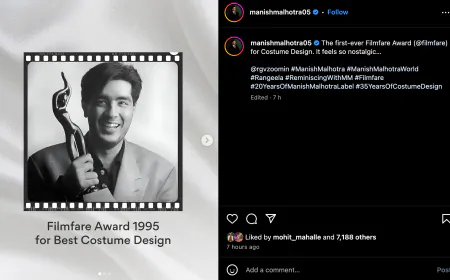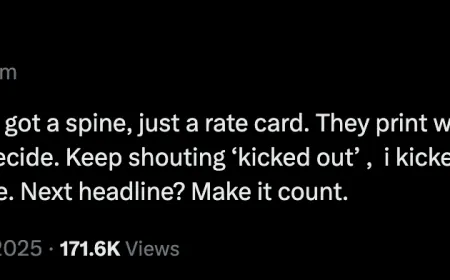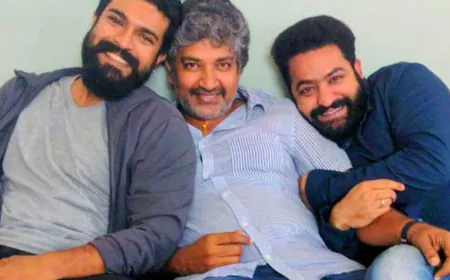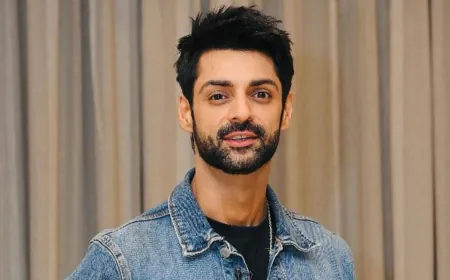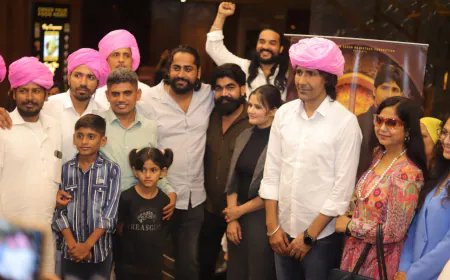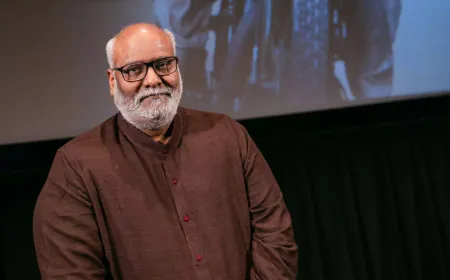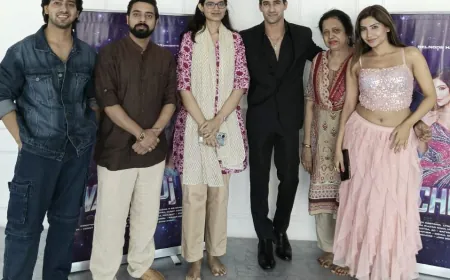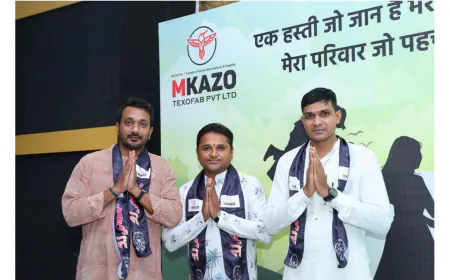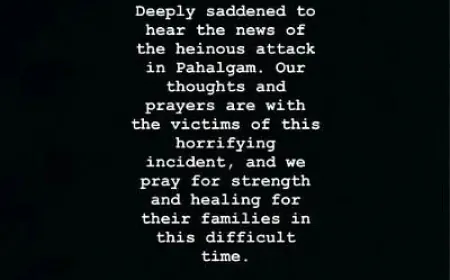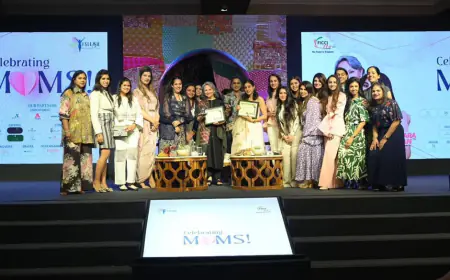The Fictionalised Non-Fiction: Changing Contours
New Delhi [India], February 21: Of late, there is a growing trend to make documentaries, which look fiction films and the fiction films which look like documentaries. At times it becomes difficult to decipher whether you are watching a fiction or a non-fiction film. Recently I watched a film in MAMI , which weaved in [...]

New Delhi [India], February 21: Of late, there is a growing trend to make documentaries, which look fiction films and the fiction films which look like documentaries. At times it becomes difficult to decipher whether you are watching a fiction or a non-fiction film. Recently I watched a film in MAMI , which weaved in an emotional story into a film which was talking about Artificial Intelligence. While the filmmakers have their own reasons for doing so, the critics are dived on the issue. One of the arguments given by the purists is that if the non-fiction films are determined to look , feel and move like fiction films , what’s the point in making non-fiction films ?
The earliest non-fiction films sought to present reality in its rawest form. The Lumière Brothers’ Workers Leaving the Factory (1895) and Arrival of a Train at La Ciotat (1895) are among the first examples of capturing real-life events without manipulation. Filmmakers like Robert Flaherty (Nanook of the North, 1922) and Dziga Vertov (Man with a Movie Camera, 1929) were pioneers in the documentary movement. While Flaherty’s work had a slight narrative structure, Vertov strongly believed in an unfiltered representation of life through cinéma vérité—a style dedicated to capturing unscripted reality.
Over time, non-fiction filmmakers began incorporating narrative devices traditionally associated with fiction films. Techniques like montages, dramatic reenactments, background music, and the three-act structure became common. Documentarians started using these cinematic tools to engage audiences emotionally and make their films more compelling.
For instance, in Michael Moore’s Bowling for Columbine (2002) or Asif Kapadia’s Amy (2015), dramatic pacing, music, and structured storytelling make the films feel closer to fiction in engagement, even though they are based on real events. Similarly, in India, films like Katiyabaaz (2013), which tells the story of electricity theft in Kanpur, or Placebo (2014), which explores mental health in India’s educational institutions, use dramatized elements, background music, and structured narratives to create emotional depth.
Critics argue that using narrative techniques from fiction dilutes the objectivity of non-fiction. They believe that documentaries should function as neutral observers, presenting reality without embellishment. The inclusion of music, reenactments, and emotional arcs can manipulate audience perception, leading to a subjective rather than objective truth.
On the other hand, many modern documentary filmmakers argue that strict realism does not always engage audiences effectively. They believe that storytelling is necessary to make documentaries accessible and impactful.
On the other hand several fiction films have successfully employed the documentary style of filmmaking, blending realism with scripted narratives to create an immersive, vérité-like experience. Here are some notable examples:
International Cinema
1. The Battle of Algiers (1966, dir. Gillo Pontecorvo): A landmark in documentary-style fiction filmmaking, this film about the Algerian War was shot with handheld cameras, non-professional actors, and a newsreel aesthetic, making it appear like an actual documentary.
2. Z (1969, dir. Costa-Gavras): A political thriller that employs handheld cinematography, naturalistic performances, and real-time pacing, giving it the feel of an investigative documentary.
3. The Blair Witch Project (1999, dir. Daniel Myrick & Eduardo Sánchez): One of the most famous found-footage horror films, it was marketed as real footage, using handheld cameras and improvisational performances to heighten its documentary realism.
4. Children of Men (2006, dir. Alfonso Cuarón): While heavily scripted, its long takes, handheld camerawork, and natural lighting create an intense, documentary-like sense of immediacy in a dystopian setting.
5. District 9 (2009, dir. Neill Blomkamp): The sci-fi film is presented as a mockumentary, incorporating news-style interviews and handheld footage to add realism to its depiction of an alien refugee crisis.
6. The Hurt Locker (2008, dir. Kathryn Bigelow): Shot with multiple handheld cameras and a raw, observational approach, this war film closely resembles a frontline documentary.
Indian Cinema
1. Black Friday (2004, dir. Anurag Kashyap): A gripping retelling of the 1993 Mumbai blasts, shot in a cinéma vérité style with real locations, handheld cameras, and a documentary-like approach.
2.Missed Call ( 2005,dir Mridul Toolsidass): Using a secretly carried camera by the protagonist , it was shot in cinema verité style and used the secretly captured raw moments in the narrative of the film.
3. Love Sex Aur Dhokha (2010, dir. Dibakar Banerjee): Uses hidden cameras, CCTV footage, and handheld shots to tell three interconnected stories, making it appear as if it were captured in real-time.
4. Dhobi Ghat (2011, dir. Kiran Rao): The film employs documentary-style cinematography, including handheld shots and real Mumbai locations, blurring the line between fiction and reality.
5. Ship of Theseus (2012, dir. Anand Gandhi): While not entirely documentary in style, the film’s use of naturalistic cinematography, real settings, and observational storytelling give it a deeply authentic feel.
6. Court (2014, dir. Chaitanya Tamhane): A minimalist legal drama that closely mimics documentary filmmaking with its long takes, non-professional actors, and real-life court procedures.
7. Newton (2017, dir. Amit V. Masurkar): The film uses documentary-like realism to portray the electoral process in a remote village, capturing the setting and performances with an unfiltered, observational style.
The critics or the purists may have arguments on both side of the topic, but I believe change is inevitable and the blurring of the diving line is nothing but a reflection of the times we are living it. It is a part of the process which is being induced with the technological changes which are happening around us and are unstoppable. Therefore in the days to come we will see more blurring of this diving line and we shall se see more of this hybrid kind of filmmaking. I personally believe that a balance between realism and cinematic storytelling may be the key to the future of documentary filmmaking.
A notable example of this hybrid form of documentary filmmaking is ‘Waltz with Bashir’ (2008), directed by Ari Folman. It is an animated documentary that reconstructs the director’s lost memories of the 1982 Lebanon War. The film uniquely blends documentary elements with stylized animation, making it both a personal recollection and a broader commentary on war and trauma. While based on real interviews and events, its use of animation creates a dreamlike atmosphere that challenges the traditional boundaries of non-fiction.
https://youtu.be/hWjR9d0IhSQ?si=A543wNrJH5c5DuOw
Ultimately, non-fiction cinema must evolve with its audience while preserving its core mission: presenting truth in the most compelling way possible.
OP Srivastava is a National Film Award winning filmmaker and writer based in Mumbai.
+9819812473: reelismfilms@gmail.com
If you have any objection to this press release content, kindly contact pr.error.rectification@gmail.com to notify us. We will respond and rectify the situation in the next 24 hours.
